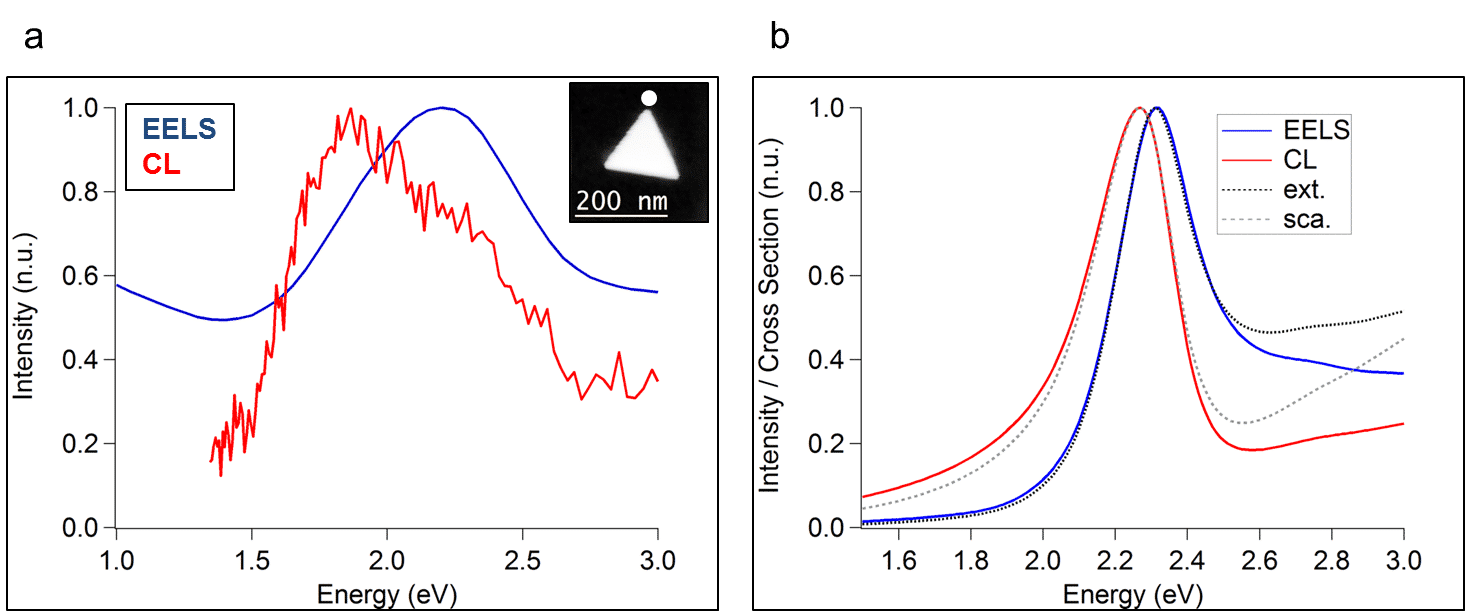
Unveiling Nanometer Scale Extinction and Scattering Phenomena through Combined Electron Energy Loss Spectroscopy and Cathodoluminescence Measurements
Spatially resolved fast electron based spectroscopy techniques, which include Electron Energy Loss Spectroscopy (EELS) and CathodoLuminescence (CL), have proved during the past few years to be tremendous tools to study Surface Plasmons (SP) in nanoparticles thanks to their extremely high spatial resolution [1]. Despite their apparent close resemblance, the drastically different character of EELS and CL has been theoretically predicted [2]. However, its experimental demonstration was missing until recently, due to the lack of any EELS and CL measurements on the exact same nanoobjects. In this work, we explore the differences between EELS and CL by performing the first combined EELS and CL experiments on single nanoparticles. By studying small gold triangular nanoprisms as a model system, we show that CL only probes radiative SP modes, contrary to EELS which probes both radiative and non-radiative modes. We further show that a radiative mode may induce slightly shifted resonances in EELS with respect to CL. These results are in accordance with electromagnetic numerical simulations. The latter demonstrate, together with a quasistatic analytical theory that we develop, that our experimental observations can be related to the respective extinction and scattering nature of EELS and CL. This work demonstrates the great interest of performing combined EELS and CL experiments for plasmonics studies [3].

a. EELS (blue) and CL (red) spectra measured at the tip of a gold triangular nanoprism. Inset: Image of the nanoprism. The white disk indicates the electron position. Although related to the same dipolar mode, the EELS and CL resonances are strikingly shifted with respect to each other. b. Calculated light extinction (black dotted line) and scattering spectra (grey dotted line) superimposed to calculated EELS (blue) and CL (red) tip spectra for a single gold nanoprism. The link between EELS and extinction on the one hand, CL and scattering on the other, is obvious from this graph.
[1] M. Kociak, O. Stéphan, Chem. Soc. Rev. 43, 3865 (2014)
[2] F. J. García de Abajo, Rev. Mod. Phys. 82, 209 (2010).
[3] A. Losquin et al., to appear in Nano Lett.
arthur.losquin@fysik.lth.se
Powered by Eventact EMS